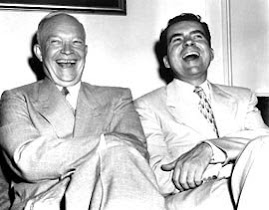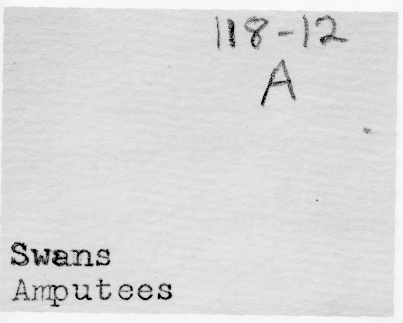 Yesterday's Times ran a story on the Arts page - something of a lead story - that struck me as oddly reported and unfinished, and it bothered me quite a bit that they'd even run it. Where was the story? At the University of Virginia, the venerable and, until recently, rather sleepy old quarterly, Virginia Quarterly Review, is having some problems. Its editor, whom almost everyone praises for having revived the journal, seems to be a bad manager and supervisor. There have been complaints to the university from the staff. The editor was turned town for a faculty appointment in the English department. The managing editor, who had suffered from depression, recently committed suicide. The article implies a cause-and-effect connection between and among these factors but--unless we're not being told some crucial fact--it just doesn't add up. Bad relations between a university-affiliated journal and the English department? No news there. A talented editor is bad at running his office? University staff complain about poor management? No news there either. A person suffering from depression takes his own life? Sadly, no news there. So where's the story? I missed any sort of narrative smoking gun here. Presented with this story, as written, the Times editors should have killed the article or asked that the evidence of something newsworthy be made clear. Otherwise, it's commonplace innuendo. As an attentive reader I kept thinking this: Is there something else I need to know to understand this? Is the Times being tasteful in leaving out something salacious? At its worst, the story vaguely implies that the editor drove his managing editor to suicide. But no one quoted in the article comes even close to saying that, so running a fairly major article implying it is, I think, reprehensible as journalism.
Yesterday's Times ran a story on the Arts page - something of a lead story - that struck me as oddly reported and unfinished, and it bothered me quite a bit that they'd even run it. Where was the story? At the University of Virginia, the venerable and, until recently, rather sleepy old quarterly, Virginia Quarterly Review, is having some problems. Its editor, whom almost everyone praises for having revived the journal, seems to be a bad manager and supervisor. There have been complaints to the university from the staff. The editor was turned town for a faculty appointment in the English department. The managing editor, who had suffered from depression, recently committed suicide. The article implies a cause-and-effect connection between and among these factors but--unless we're not being told some crucial fact--it just doesn't add up. Bad relations between a university-affiliated journal and the English department? No news there. A talented editor is bad at running his office? University staff complain about poor management? No news there either. A person suffering from depression takes his own life? Sadly, no news there. So where's the story? I missed any sort of narrative smoking gun here. Presented with this story, as written, the Times editors should have killed the article or asked that the evidence of something newsworthy be made clear. Otherwise, it's commonplace innuendo. As an attentive reader I kept thinking this: Is there something else I need to know to understand this? Is the Times being tasteful in leaving out something salacious? At its worst, the story vaguely implies that the editor drove his managing editor to suicide. But no one quoted in the article comes even close to saying that, so running a fairly major article implying it is, I think, reprehensible as journalism.(Full disclosure: I got my PhD from UVa; I slightly knew VQR's old longtime editor, Staige Blackford, and wrote perhaps one short review for the journal 25 years ago.)






 "I teach horizontally, meaning that while I might begin with a fixed idea of what I'm going to teach that day, I let it drift rhizomatically way off topic, often pulling it back when it gets too far. I rely on non-fixed materials to teach this way; the whole world is at my fingertips. Should I go off on a tangent about John and Rauschenberg and their love relationship as expressed in Rauschenberg's bed, an image of that bed is always a click away. From there, we can head anywhere into the non-fixed universe, be it film, text or sound. And of course, that always takes us elsewhere. As Cage says, 'We are getting nowhere fast.'"
"I teach horizontally, meaning that while I might begin with a fixed idea of what I'm going to teach that day, I let it drift rhizomatically way off topic, often pulling it back when it gets too far. I rely on non-fixed materials to teach this way; the whole world is at my fingertips. Should I go off on a tangent about John and Rauschenberg and their love relationship as expressed in Rauschenberg's bed, an image of that bed is always a click away. From there, we can head anywhere into the non-fixed universe, be it film, text or sound. And of course, that always takes us elsewhere. As Cage says, 'We are getting nowhere fast.'" 

 that anyone has yet got the imaginative measure of that terrifying day six years ago. Certainly our Tolstoy has not crawled out of the rubble. The closest we have, Don DeLillo, succeeded as an essayist-journalist ("In the Ruins of the Future: Reflections on Terror and Loss in the Shadow of September,” Harper’s, December 2001) but, to my mind, failed as a novelist ("Falling Man"). One reason, perhaps, is that the remembered emotion was instantly buried under a pile of cultural junk.' - Tod Gitlin in his review of Susan Faludi's The Terror Dream (written for
that anyone has yet got the imaginative measure of that terrifying day six years ago. Certainly our Tolstoy has not crawled out of the rubble. The closest we have, Don DeLillo, succeeded as an essayist-journalist ("In the Ruins of the Future: Reflections on Terror and Loss in the Shadow of September,” Harper’s, December 2001) but, to my mind, failed as a novelist ("Falling Man"). One reason, perhaps, is that the remembered emotion was instantly buried under a pile of cultural junk.' - Tod Gitlin in his review of Susan Faludi's The Terror Dream (written for 






























